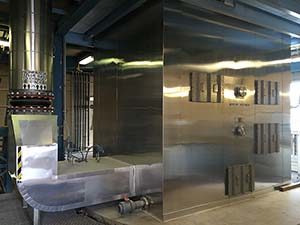
Many wastewater treatment facilities employ a sewage sludge incinerator (SSI) to burn and thereby dispose of dewatered sewage sludge. The types of SSIs used at wastewater treatment facilities include fluidized bed incinerators and multiple hearth furnaces.
These incinerators produce a wide variety of air contaminants. The Environmental Protection Agency (EPA) stipulates emission limits for SSIs at wastewater treatment facilities. These restrictions include emission limits for both existing and new sewage sludge incinerator units.
Under EPA regulations, air emissions are limited for nine air pollutants:
- Cadmium
- Carbon Monoxide
- Dioxins & Furans
- Hydrogen Chloride
- Lead
- Mercury
- Nitrogen Oxides (NOx)
- Particulate Matter (PM)
- Sulfur Dioxide (SO2)
Existing sewage sludge incinerators often fail to meet the new emission limits for mercury in particular, and many units also require additional controls for other contaminants, such as dioxins and furans, cadmium, lead, particulate matter, and/or SO2. For new SSIs, the emission limits are even lower, which more or less dictates that all new SSIs will require emission control systems involving at least a few steps.
APC has many successful emission control systems installed at wastewater treatment facilities to remove mercury, dioxins and furans, cadmium, lead, particulate matter, and other emissions from sewage sludge incinerators. Some of APC’s MercPure Mercury Emission Control Systems have been EPA compliance tested for over three years following commissioning, and the results have been consistently well below the applicable Subpart MMMM and LLLL emission limits for mercury, particulate matter (PM), cadmium, lead, dioxins and furans, and SO2. All units still have the initial adsorption media in place. APC’s systems have been extremely reliable, in a number of cases operating more or less 24/7 for 50 weeks per year.
When treating SSI exhaust gases, proper conditioning of the gas stream is key, as the gas stream typically has high water and acid dew points and contains a significant amount of very fine, submicron particulate. APC is highly experienced with these issues that are unique to SSI emissions and can help with the overall emission control train design, including beyond APC’s equipment. Each MercPure Emission Control System is custom-designed for the application and may integrate any of the following equipment: mist eliminator, submicron particulate filtration equipment, adsorption unit and media, gas heaters for all phases of operation including start-up, blowers, instrumentation, valves/dampers, ductwork and PLC controls. APC is adsorption-media independent, and as such we select the best media available on the market for the application, considering factors such as cost, performance, compatibility with specific gas stream conditions, and bed longevity.
APC’s emission control systems for SSIs are designed to minimize maintenance and life-cycle costs. Contact us to discuss your air emission control needs.

